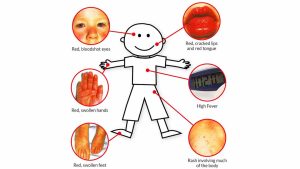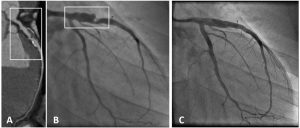Introduction: Kawasaki disease, also referred to as mucocutaneous lymph node syndrome, is a relatively rare but impactful condition affecting children. The hallmark of this disease is inflammation in the walls of small to medium-sized blood vessels, predominantly those supplying oxygen-rich blood to the heart. Symptoms: Recognizing the symptoms of Kawasaki disease is vital for timely
Introduction:
Kawasaki disease, also referred to as mucocutaneous lymph node syndrome, is a relatively rare but impactful condition affecting children. The hallmark of this disease is inflammation in the walls of small to medium-sized blood vessels, predominantly those supplying oxygen-rich blood to the heart.

Image by: yendex.com
Symptoms:
Recognizing the symptoms of Kawasaki disease is vital for timely intervention. Children afflicted with this condition often present with a prolonged high fever exceeding 102.2 degrees Fahrenheit for five or more days. Additionally, they may exhibit at least four of the following symptoms:
- A rash on the main part of the body or in the genital area.
- Enlarged lymph nodes in the neck.
- Red eyes without a thick discharge.
- Red, dry, cracked lips and a red, swollen tongue.
- Swollen, red skin on the palms of the hands and the soles of the feet, with subsequent peeling.
It is noteworthy that these symptoms may not manifest simultaneously, and parents or caregivers should inform healthcare professionals about any symptom that has resolved.
- Prolonged high fever
- Distinctive symptoms: rash, enlarged lymph nodes, red eyes, swollen tongue, and skin peeling

Image by: yendex.com
When to See a Doctor:
Understanding when to seek medical attention is crucial. If a child experiences a fever lasting more than three days, prompt consultation with a healthcare professional is recommended. Early treatment within the first 10 days of symptom onset significantly reduces the likelihood of lasting damage to the arteries supplying the heart.

Image by: yendex.com
Causes:
The exact cause of Kawasaki disease remains elusive. However, experts rule out person-to-person transmission. Some theories suggest a potential association with bacterial or viral infections, environmental factors, and genetic predisposition. While the precise triggers are unclear, certain genes may increase a child’s susceptibility to the disease.
- No known person-to-person transmission
- Potential links to infections, environmental factors, and genetics

Image by: yendex.com
Risk Factors:
Several factors influence a child’s risk of developing Kawasaki disease. Children under the age of 5 are at the highest risk, with a slightly elevated risk for males. Ethnicity also plays a role, as children of Asian or Pacific Islander descent exhibit higher rates of the disease. Additionally, Kawasaki disease tends to occur seasonally, with a higher incidence in winter and early spring.
- Higher risk for children under 5
- Slightly increased risk for males
- Higher rates in Asian or Pacific Islander descent
Complications:
Kawasaki disease, if left untreated, can lead to significant complications, Treatment for other health problems particularly in the realm of heart health. It stands as a leading cause of heart disease in children residing in developed countries. Complications may include swelling of blood vessels, most commonly affecting arteries supplying blood to the heart, swelling of the heart muscle, and heart valve problems. These complications can potentially result in the formation of aneurysms, raising the risk of blood clots and, in severe cases, leading to a heart attack or internal bleeding.
- Leading cause of heart disease in children
- blood vessel and heart issues
- Rare fatalities associated with heart artery problems

Image by: yendex.com
Comparative Table:
| Aspect | Kawasaki Disease | Multisystem Inflammatory Syndrome in Children (linked to COVID-19) |
|---|---|---|
| Cause | Unknown | Associated with COVID-19 infection |
| Transmission | Not person-to-person | Linked to COVID-19 transmission |
| Symptoms | High fever, rash, swollen hands | Fever, abdominal pain, skin rash, and involvement of multiple organs |
| Risk Factors | Age (under 5), sex, ethnicity | Associated with COVID-19 infection |
| Complications | Heart-related issues | Multisystem involvement, potential impact on various organs |
Conclusion
In conclusion, this comprehensive guide serves as a valuable resource for parents and caregivers, equipping them with the knowledge needed to navigate the complexities of Kawasaki disease in children. By understanding the symptoms, causes, and associated risks, individuals can take proactive steps in ensuring the well-being of affected children through early recognition and intervention.






















